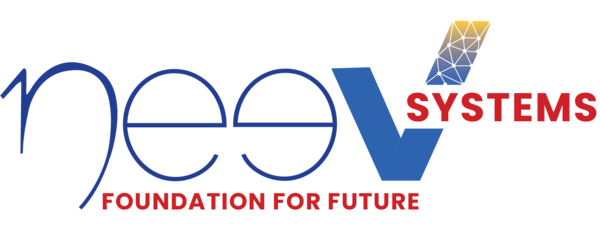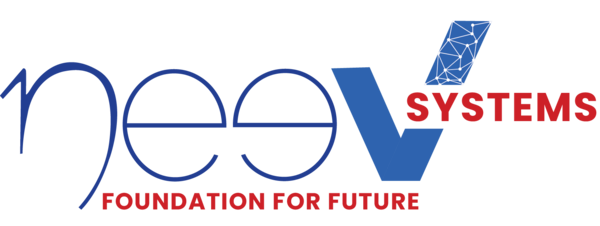Executive Summary
The rapid pace of technological advancements, coupled with increasing cyber threats and regulatory requirements, has made it imperative for businesses to adopt robust governance and risk management frameworks. This blog explores the key challenges organizations face in the digital age, the importance of effective governance and risk management, and the benefits of integrating data analytics into these processes.
Partnering with a reliable service provider like Neev Systems can help companies identify how digital risks emerge, develop strategies to mitigate threats, protect sensitive data, and ensure compliance with regulations.
Key Takeaways
- Governance and risk management are essential for navigating the complexities of the digital age.
- Use data analytics to enhance governance and risk management by providing valuable insights and enabling proactive decision-making.
- Implement effective governance and risk management strategies to protect your assets, improve your reputation, and achieve long-term success.
Imagine running through a constantly shifting maze blindfolded. That’s pretty much what it feels like trying to navigate data governance and risk management without a solid data analytics strategy. Sound chaotic? It is, and it’s exactly what’s happening in today’s digital age.
The way we do business has completely changed. The early 2000s are long gone, when the Internet and smartphones debuted and cybersecurity hazards were a newer concept. Over two decades later, today, we meet physical files and fax machines in museums and run the world on data.
With data at the heart of modern business, the threat of cyberattacks is at an all-time high. How do you stay ahead without losing your mind and data?
Hoping for the best isn’t a strategy. You’re exposing your business to potential threats if you’re not leveraging data analytics to lock down your governance and risk practices. A well-planned data analytics strategy protects your business and gives you control. It helps you see the threats coming, manage them before they spiral, and stay steps ahead.
Is your data driving smart decisions, or are you exposing your business to unnecessary risk? Let’s break down how you can get ahead and stay there.
Understanding Governance and Risk Management
Digital. As fancy as it may sound, the virtual world has invited more threats than the traditional days of business.
Data breaches are becoming more common, given the virtual world’s rapid growth. In 2023, the United States reported over 353 million people affected by security threats, data compromises, breaches, leaks, and exposure. Imagine what these leaks can do to a company with millions of data stored in its systems!
Data governance is the framework that guides and controls an organization’s activities. It ensures that decisions align with its mission, vision, and values. On the other hand, risk management involves identifying, assessing, and mitigating potential threats that could impact an organization’s objectives.
Data governance and risk management help address the following:
| Cybersecurity Threats | Ransomware attacks, phishing scams, and data breaches are becoming more sophisticated and frequent. |
| Regulatory Compliance | Non-compliance with the growing number of regulations, such as GDPR, HIPAA, and CCPA, can result in hefty fines and reputational damage. |
| Technology Complexity | Technologies like cloud computing, AI, and IoT introduce new risks and require new governance and risk management approaches. |
| Data Privacy and Security | Every company collects and stores vast amounts of personal data, sensitive information, and confidential files, making them a prime target for cybercriminals. |
| Third-Party Risks | Many organizations rely on third-party vendors and suppliers, which can introduce additional risks. |
Just like a house needs solid walls and a sturdy roof, organizations rely on seven essential formations to mitigate risks:
- Data Management
- Advanced Analytics and Decision Automation
- Smart Visualization and Interfaces
- Talent and Culture
- Process and Work-Flow Automation
- A Cohesive, Timely, and Flexible Infrastructure
- External Ecosystem


Strengthen Governance, Minimize Risks
Benefits of Integrating Data Analytics
Suppose you have a ton of data. That’s great, but your data is worthless without an actionable strategy to help you decode the insights within. You must know your customers, competitors, threats, and internal risks.
Data analytics helps you with that. It enables you to understand the past and present to make informed decisions and manage your resources better, so it’s only accessible to authorized personnel. According to a recent survey of data and analytics professionals, 83% of organizations with well-established data governance programs experience significant improvements in data quality.
Here are some significant benefits of integrating data analytics into your governance and risk management systems:

The Restoration Hardware case study is worth considering in this context. Neev Systems partnered with this California-based retail company to optimize its IT systems and processes using ServiceNow.
After integrating ServiceNow with Active Directory and Okta, Neev Systems streamlined user management, authentication, and access control. This resulted in a significant reduction in security incidents (30%), a 20% improvement in service response time, enhanced security and compliance, and improved service delivery.
Implementation Steps
With the increasing complexity of threats and regulations, adopting a proactive approach to safeguarding sensitive data and ensuring business continuity is essential. This step-by-step guide can help you transform your IT security with data analytics and integration:

Step 1: Establish data governance
Develop thorough data governance policies and procedures to ensure data quality, security, and compliance. Employ automated tools to streamline processes, track data quality, and facilitate stakeholder collaboration.
Step 2: Conduct risk analysis
Use statistical techniques to analyze historical data and estimate the probability and impact of potential risks. Rank risks based on their likelihood and severity to focus on the most critical areas and then create plans to address and minimize the consequences of potential risks.
Step 3: Create a data migration plan
Develop a data migration plan that addresses data mapping, cleansing, and security requirements. Verify the accuracy and completeness of migrated data to ensure its reliability for analysis.
Step 4: Select data visualization tools
Choose visualization tools that are easy to use and can effectively communicate complex data. Develop interactive dashboards and reports to present risk data in a clear and understandable manner.
Step 5: Implement AI and machine learning
Employ AI and machine learning algorithms to identify hidden patterns and insights within data that may not be apparent through traditional analysis. Use predictive models to forecast potential risks and opportunities. Further, automate routine tasks, such as anomaly detection and risk assessment, to improve efficiency and reduce human error.
Step 6: Enforce access control
Establish vigorous authentication and authorization mechanisms to ensure only authorized users can access sensitive data. Assign appropriate access permissions based on users’ roles and responsibilities.
Step 7: Track data lineage
Track the origin, transformation, and usage of data to improve data governance, manage risks more effectively, and facilitate data access. Document data lineage information to clearly understand data relationships and dependencies.
Step 8: Monitor and audit regularly
Periodically review and assess data governance practices to ensure they remain aligned with changing business requirements and regulatory landscape. Perform audits to identify and address any weaknesses or non-compliance issues.
Neev Systems: Your Digital Risk Management Partner
Let’s face it: navigating today’s digital risks and cyber threats without integrating data analytics is like fighting a wildfire with a garden hose. You have data leaks, privacy regulations, and data-driven decision-making – that’s a lot to juggle. While the benefits are massive, getting there on your own can be pretty challenging.
That’s where Neev Systems can help you.
With our expertise in data analytics and cutting-edge tools like threat intelligence, incident response, and security automation, we’re here to help you build an unshakable digital fortress. Get the Neev advantage with our IT modernization and security transformation services across planning, implementation, support & operations, and innovation.
Are you ready to transform your business, or will you wait until it’s too late? Let us help you stay ahead of the curve before your competitors do.

Evolving Threats Call for Evolving Governance

Amar Chand Dasari
With 15 years of experience in Data Analytics and Business Intelligence, Amar excels in designing scalable solutions for industries like Manufacturing, Finance, and Telecom. His expertise includes hybrid BI architectures with AWS, Azure, and Snowflake. Amar is passionate about delivering end-to-end solutions that turn data into actionable insights.


